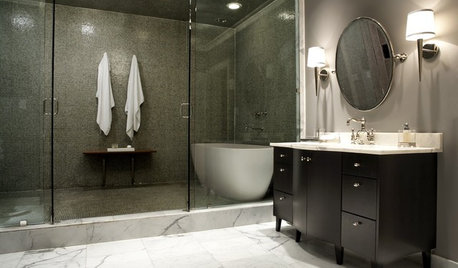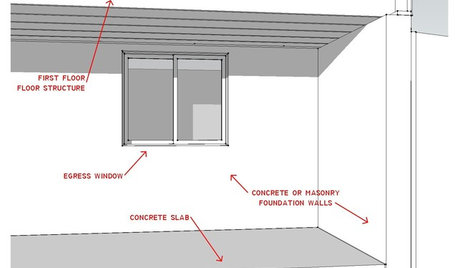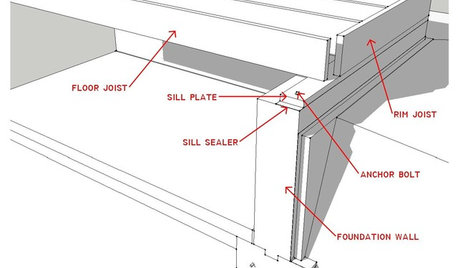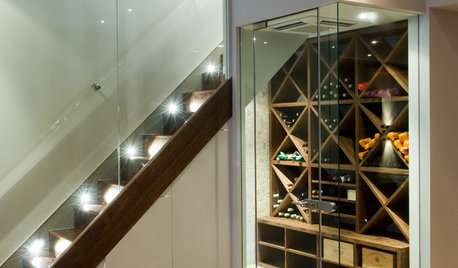Vapor Barriers
bbgamer
16 years ago
Related Stories

BATHROOM DESIGNHow to Choose Tile for a Steam Shower
In steamy quarters, tile needs to stand up to all that water and vapor in style. Here's how to get it right the first time
Full Story
REMODELING GUIDESCool Your House (and Costs) With the Right Insulation
Insulation offers one of the best paybacks on your investment in your house. Here are some types to discuss with your contractor
Full Story
GREEN BUILDINGInsulation Basics: Natural and Recycled Materials
Consider sheep’s wool, denim, cork, cellulose and more for an ecofriendly insulation choice
Full Story
REMODELING GUIDESKnow Your House: The Steps in Finishing a Basement
Learn what it takes to finish a basement before you consider converting it into a playroom, office, guest room or gym
Full Story
KNOW YOUR HOUSEKnow Your House: What Makes Up a Floor Structure
Avoid cracks, squeaks and defects in your home's flooring by understanding the components — diagrams included
Full Story
GREEN BUILDINGInsulation Basics: Heat, R-Value and the Building Envelope
Learn how heat moves through a home and the materials that can stop it, to make sure your insulation is as effective as you think
Full Story
WINE CELLARS7 Steps to Create a Connoisseur's Wine Cellar
Showcase your wine to its best advantage while ensuring proper storage conditions. Snooty attitude optional
Full Story
MATERIALSInsulation Basics: What to Know About Spray Foam
Learn what exactly spray foam is, the pros and cons of using it and why you shouldn’t mess around with installation
Full Story
BATHROOM DESIGNHow to Settle on a Shower Bench
We help a Houzz user ask all the right questions for designing a stylish, practical and safe shower bench
Full Story
REMODELING GUIDESWhen to Use Engineered Wood Floors
See why an engineered wood floor could be your best choice (and no one will know but you)
Full StoryMore Discussions








worthy
bbgamerOriginal Author
Related Professionals
Salem General Contractors · Arlington General Contractors · Artesia General Contractors · Browns Mills General Contractors · Fitchburg General Contractors · Milford Mill General Contractors · Park Forest General Contractors · Carlsbad Flooring Contractors · Framingham Flooring Contractors · Fort Pierce Flooring Contractors · Hammond Flooring Contractors · Lombard Flooring Contractors · Medway Flooring Contractors · Winchester Flooring Contractors · Thibodaux Flooring Contractorsworthy
homebound
bbgamerOriginal Author
homebound
homebound
homebound
bbgamerOriginal Author